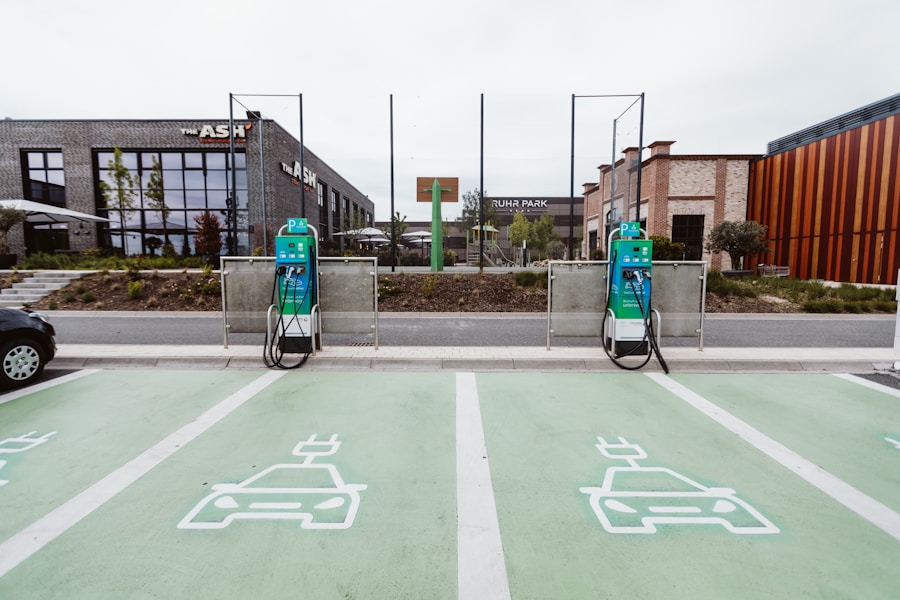Pēdējos gados elektriskie velosipēdi jeb e-velosipēdi ir strauji kļuvuši populārāki, mainot pilsētas transporta ainavu. Šo tendenci var attiecināt uz vairāku faktoru kopumu, tostarp bažām par vidi, tehnoloģiju attīstību un pieaugošu vēlmi pēc alternatīvām pārvietošanās iespējām. E-velosipēdi piedāvā ilgtspējīgu pārvietošanās veidu, kas ievērojami samazina oglekļa emisijas salīdzinājumā ar tradicionālajiem transportlīdzekļiem.
Pilsētām cīnoties ar piesārņojuma un satiksmes sastrēgumu problēmām, elektriskie velosipēdi piedāvā dzīvotspējīgu risinājumu, kas atbilst daudzu pilsētplānotāju un vides aizstāvju mērķiem. Elektrisko velosipēdu pievilcība sniedzas tālāk par to draudzīgumu videi. Tie nodrošina efektīvu līdzekli pārslogotu pilsētu teritoriju pārvietošanai, ļaujot braucējiem apiet sastrēgumus un ātrāk sasniegt galamērķus.
Turklāt elektriskie velosipēdi ir piemēroti dažādām demogrāfiskajām grupām, sākot no darba braucējiem, kuri meklē ātrāku veidu, kā nokļūt darbā, līdz atpūtas braucējiem, kuri vēlas izbaudīt patīkamu pieredzi brīvā dabā. Elektromotoru integrācija ļauj lietotājiem pārvarēt sarežģītus reljefus un nobraukt garākus attālumus bez fiziskas slodzes, kas parasti saistīta ar riteņbraukšanu. Tā rezultātā elektriskie velosipēdi ir kļuvuši par pievilcīgu iespēju cilvēkiem, kuri iepriekš, iespējams, uzskatīja riteņbraukšanu par nepraktisku vai pārāk prasīgu.
Galvenie secinājumi
- Elektriskie velosipēdi kļūst arvien populārāki kā ilgtspējīgs un ērts pārvietošanās veids.
- Pieprasījums pēc elektrisko velosipēdu uzlādes stacijām pieaug, jo arvien vairāk cilvēku ikdienas braucieniem izmanto elektriskos velosipēdus.
- Paplašinot piekļuvi elektrisko velosipēdu uzlādes stacijām, var uzlabot gaisa kvalitāti, samazināt satiksmes sastrēgumus un veicināt veselīgāku dzīvesveidu kopienās.
- Lai veiksmīgi ieviestu elektrisko velosipēdu uzlādes stacijas, ir jārisina tādas problēmas kā infrastruktūras ierobežojumi un finansējuma šķēršļi.
- Elektrisko velosipēdu uzlādes staciju nākotne ietver tādus jauninājumus kā saules enerģijas stacijas un paplašināšanās plānus, lai apmierinātu pieaugošo pieprasījumu.
- Iedzīvotāji var atbalstīt elektrisko velosipēdu uzlādes staciju paplašināšanu savā reģionā, iestājoties par infrastruktūras uzlabošanu un piedaloties kopienas iniciatīvās.
Elektrisko velosipēdu uzlādes staciju nepieciešamība: pieprasījuma izpratne
Pilsētvides izaicinājums
Šī vajadzība ir īpaši aktuāla pilsētu teritorijās, kur pārvietošanās attālumi var ievērojami atšķirties. Elektrovelosipēdu pārdošanas apjoma pieaugums ir bijis satriecošs; ziņojumi liecina, ka globālie elektrovelosipēdu pārdošanas apjomi tikai 2020. gadā sasniedza aptuveni 40 miljonus vienību, un prognozes liecina par turpmāko izaugsmi arī turpmākajos gados.
Bezdarbības sekas
Pilsētas, kas neinvestē uzlādes infrastruktūrā, riskē atsvešināt potenciālos e-velosipēdu lietotājus, kuri, iespējams, vilcinās izmantot šo pārvietošanās veidu, baidoties no akumulatora darbības laika un uzlādes pieejamības.
Visaptverošs risinājums
Tāpēc visaptveroša uzlādes staciju tīkla izveide ir būtiska ne tikai pašreizējiem lietotājiem, bet arī, lai mudinātu jaunus braucējus pieņemt elektriskos velosipēdus kā dzīvotspējīgu alternatīvu tradicionālajām pārvietošanās metodēm.
Piekļuves paplašināšanas priekšrocības: kā elektrisko velosipēdu uzlādes stacijas var uzlabot kopienas

Elektrisko velosipēdu uzlādes staciju paplašināšana var sniegt daudzus ieguvumus kopienām, uzlabojot gan iedzīvotāju dzīves kvalitāti, gan vides veselību kopumā. Viena būtiska priekšrocība ir ilgtspējīgas transporta prakses veicināšana. Nodrošinot pieejamas uzlādes iespējas, pilsētas var mudināt vairāk cilvēku izvēlēties elektriskos velosipēdus, nevis automašīnas, tādējādi samazinot satiksmes sastrēgumus un siltumnīcefekta gāzu emisijas.
Šīs pārmaiņas ne tikai veicina tīrāku gaisu, bet arī veicina ilgtspējības kultūru, kas var iedvesmot turpmākas videi draudzīgas iniciatīvas sabiedrībā. Turklāt uzlādes staciju klātbūtne var stimulēt vietējo ekonomiku. Elektrisko velosipēdu braucēji, uzlādējot savus velosipēdus, bieži meklē tuvumā esošus uzņēmumus, radot iespējas vietējiem veikaliem un kafejnīcām piesaistīt jaunus klientus.
Šis ekonomiskais stimuls var būt īpaši izdevīgs apgabalos, kuros var būt grūtības ar gājēju satiksmi vai klientu plūsmu. Turklāt, ieguldot elektrovelosipēdu infrastruktūrā, kopienas apliecina apņemšanos izmantot mūsdienīgus transporta risinājumus, kas var uzlabot to pievilcību kā progresīvas un uz nākotni orientētas dzīves un darba vietas. Uzlādes staciju integrēšana publiskās vietās var arī veicināt sociālo mijiedarbību un sabiedrības iesaistīšanos, jo šie centri kļūst par pulcēšanās vietām gan braucējiem, gan tiem, kas nebrauc ar velosipēdu.
Izaicinājumu pārvarēšana: šķēršļu novēršana uzlādes staciju ieviešanā
| Izaicinājumi |
Barjeras |
Ietekme |
| Augstas sākotnējās izmaksas |
Uzlādes staciju iegādes un uzstādīšanas izmaksas |
Finansiālais slogs uzņēmumiem un organizācijām |
| Infrastruktūras trūkums |
Nepietiekama uzlādes staciju pieejamība |
Elektromobiļu plašas ieviešanas ierobežošana |
| Regulējošie šķēršļi |
Sarežģītas atļauju un zonējuma prasības |
Kavēšanās īstenošanā un palielināts administratīvais slogs |
| Tehnoloģiskā saderība |
Saderības problēmas ar dažādiem transportlīdzekļu modeļiem |
Samazinātas ērtības un pieejamība lietotājiem |
Neskatoties uz nepārprotamajiem ieguvumiem, kas saistīti ar elektrisko velosipēdu uzlādes staciju paplašināšanu, lai atvieglotu to ieviešanu, ir jārisina vairākas problēmas. Viens būtisks šķērslis ir sākotnējās izmaksas, kas saistītas ar uzlādes infrastruktūras uzstādīšanu. Pašvaldības var saskarties ar budžeta ierobežojumiem, kas ierobežo to spēju ieguldīt šādos projektos, jo īpaši apgabalos, kur finansējums transporta iniciatīvām jau tā ir ierobežots.
Lai pārvarētu šo šķērsli, pilsētas var izpētīt partnerības ar privātiem uzņēmumiem vai meklēt dotācijas no vides organizācijām, kuru mērķis ir veicināt ilgtspējīgus transporta risinājumus. Vēl viens izaicinājums ir vietas izvēles un uzstādīšanas loģistika. Optimālu uzlādes staciju atrašanās vietu noteikšana prasa rūpīgu tādu faktoru izvērtēšanu kā pieejamība, drošība un tuvums populāriem galamērķiem.
Turklāt var pastāvēt normatīvie šķēršļi, kas saistīti ar zonējuma likumiem vai atļauju izsniegšanas procesiem, kas var aizkavēt vai sarežģīt uzstādīšanas darbus. Iesaistīšanās ar kopienas ieinteresētajām personām plānošanas procesa sākumā var palīdzēt mazināt šīs problēmas, nodrošinot, ka tiek ņemtas vērā iedzīvotāju vajadzības un bažas. Veicinot sadarbību starp vietējām pašvaldībām, uzņēmumiem un kopienas locekļiem, pilsētas var izveidot racionālāku pieeju uzlādes infrastruktūras ieviešanai.
Elektrisko velosipēdu uzlādes staciju nākotne: inovācijas un paplašināšanas plāni
Raugoties nākotnē, elektrisko velosipēdu uzlādes staciju nākotne šķiet daudzsološa, un ir gaidāmi daudzi jauninājumi, kas varētu uzlabot to funkcionalitāti un pieejamību. Viens no aizraujošajiem sasniegumiem ir saules enerģijas uzlādes staciju parādīšanās, kas izmanto atjaunojamo enerģiju elektrisko velosipēdu akumulatoru darbināšanai. Šīs stacijas ne tikai samazina atkarību no tradicionālajiem enerģijas avotiem, bet arī piedāvā ilgtspējīgu risinājumu kopienām, kas vēlas samazināt savu ietekmi uz vidi.
Integrējot saules tehnoloģiju uzlādes infrastruktūrā, pilsētas var izveidot pašpietiekamas sistēmas, kas atbilst plašākiem ilgtspējības mērķiem. Turklāt akumulatoru tehnoloģiju attīstībai, visticamāk, būs izšķiroša nozīme e-velosipēdu uzlādes staciju nākotnes veidošanā. Palielinoties akumulatoru ietilpībai un samazinoties uzlādes laikam, var mainīties nepieciešamība pēc plašiem uzlādes tīkliem.
Nākotnes inovācijas varētu ietvert ātrās uzlādes stacijas, kas ļauj braucējiem ātri uzlādēt akumulatorus īsu pieturu laikā, vai pat bezvadu uzlādes risinājumus, kas pilnībā novērš nepieciešamību pēc fiziska savienojuma. Šie sasniegumi varētu ievērojami uzlabot lietotāja pieredzi un vēl vairāk veicināt elektrisko velosipēdu kā plaši izplatīta pārvietošanās veida izmantošanu.
Kā iesaistīties: atbalstiet elektrisko velosipēdu uzlādes staciju paplašināšanu jūsu reģionā

Personām, kuras ir ieinteresētas atbalstīt elektrisko velosipēdu uzlādes staciju paplašināšanu savās kopienās, ir vairāki veidi, kā ietekmēt situāciju. Viena efektīva pieeja ir sadarboties ar vietējās pašvaldības amatpersonām un paust atbalstu iniciatīvām, kuru mērķis ir attīstīt elektrisko velosipēdu infrastruktūru. Pilsētas domes sanāksmju apmeklēšana vai dalība publiskos forumos sniedz iespēju paust viedokli un aizstāvēt politiku, kas piešķir prioritāti ilgtspējīgiem transporta risinājumiem.
Sabiedrības iesaistīšana var notikt arī ar vietējām kampaņām, kuru mērķis ir vairot izpratni par elektrisko velosipēdu priekšrocībām un uzlādes staciju nepieciešamību. Tādu pasākumu kā grupu braucienu vai informatīvu sesiju organizēšana var palīdzēt izglītot iedzīvotājus par elektrovelosipēdiem, vienlaikus veicinot kopienas sajūtu ap šo jauno transporta veidu. Sadarbība ar vietējiem uzņēmumiem, lai veicinātu elektrovelosipēdu izmantošanu un atbalstītu uzlādes staciju iniciatīvas, var vēl vairāk pastiprināt šos centienus.
Turklāt privātpersonas var izpētīt partnerības ar aizstāvības organizācijām, kas koncentrējas uz ilgtspējīgu transportu. Daudzas bezpeļņas organizācijas nenogurstoši strādā, lai veicinātu riteņbraukšanas infrastruktūru un aizstāvētu politiku, kas atbalsta elektrisko velosipēdu ieviešanu. Brīvprātīgi ziedojot laiku vai resursus šīm organizācijām, kopienas locekļi var dot ieguldījumu plašākos centienos, kuru mērķis ir paplašināt piekļuvi elektrisko velosipēdu uzlādes stacijām un veicināt ilgtspējības kultūru savās apkaimēs.
Elektrisko velosipēdu pieaugums atspoguļo būtiskas pārmaiņas pilsētu transporta dinamikā, radot nepieciešamību pēc atbilstošas uzlādes infrastruktūras paplašināšanas. Tā kā kopienas atzīst daudzās priekšrocības, kas saistītas ar e-velosipēdiem — sākot no vides ilgtspējības līdz ekonomikas atveseļošanai —, pieprasījums pēc pieejamām uzlādes stacijām tikai turpinās pieaugt. Risinot ar ieviešanu saistītās problēmas un veicinot sabiedrības iesaistīšanos, pilsētas var bruģēt ceļu nākotnei, kurā elektriskie velosipēdi ir neatņemama ikdienas dzīves sastāvdaļa, veicinot veselīgāku vidi un dinamiskākas kopienas.
Bieži uzdotie jautājumi
Kas ir elektrisko velosipēdu uzlādes stacijas?
Elektrisko velosipēdu uzlādes stacijas ir paredzētas vietas, kur elektrisko velosipēdu lietotāji var uzlādēt savu elektrisko velosipēdu akumulatorus. Šīs stacijas ir aprīkotas ar uzlādes kontaktdakšām un bieži vien nodrošina drošu vietu, kur lietotāji var atstāt savus velosipēdus uzlādes laikā.
Kā darbojas elektrisko velosipēdu uzlādes stacijas?
Elektrisko velosipēdu uzlādes stacijām parasti ir uzlādes kontaktdakšas, kas ir saderīgas ar visizplatītākajiem elektrisko velosipēdu akumulatoru veidiem. Lietotāji var vienkārši pievienot savus elektriskos velosipēdus un ļaut tiem uzlādēties nepieciešamo laiku.
Kur var atrast elektrisko velosipēdu uzlādes stacijas?
Elektrisko velosipēdu uzlādes stacijas var atrast dažādās vietās, piemēram, publiskos parkos, velosipēdu nomas punktos, velosipēdu koplietošanas programmās un citās publiskās vietās, kuras, visticamāk, bieži apmeklē elektrisko velosipēdu lietotāji.
Vai elektrisko velosipēdu uzlādes stacijas ir bez maksas?
Dažas elektrisko velosipēdu uzlādes stacijas var būt bez maksas, īpaši sabiedriskās vietās vai kā pakalpojums, ko sniedz uzņēmumi, lai piesaistītu elektrisko velosipēdu lietotājus. Tomēr var būt arī dažas uzlādes stacijas, par kuru izmantošanu ir jāmaksā.
Cik ilgs laiks nepieciešams, lai uzlādētu elektrisko velosipēdu uzlādes stacijā?
Laiks, kas nepieciešams elektriskā velosipēda uzlādēšanai uzlādes stacijā, var atšķirties atkarībā no akumulatora ietilpības un stacijas uzlādes ātruma. Parasti elektriskā velosipēda akumulatora pilnīga uzlāde var ilgt no 2 līdz 6 stundām.
![[IZPĀRDOŠANĀ] Elektriskais kalnu velosipēds 29 collu 8 ātrumi E-velosipēds 250 W vidēja lieluma motors 43 V 12 Ah noņemams akumulators Pieaugušo elektriskais velosipēds Jaudīgs MTB](https://electricstore.eu/wp-content/uploads/2025/05/kf-S545b53ca0d344851bb43ea47488b02af8-300x300.webp) [IZPĀRDOŠANĀ] Elektriskais kalnu velosipēds 29 collu 8 ātrumi E-velosipēds 250 W vidēja lieluma motors 43 V 12 Ah noņemams akumulators Pieaugušo elektriskais velosipēds Jaudīgs MTB
1 × 1 251,04 €
[IZPĀRDOŠANĀ] Elektriskais kalnu velosipēds 29 collu 8 ātrumi E-velosipēds 250 W vidēja lieluma motors 43 V 12 Ah noņemams akumulators Pieaugušo elektriskais velosipēds Jaudīgs MTB
1 × 1 251,04 €  TALLPOWER TP200 200W pārnēsājams salokāms saules panelis saules lādētājs 24% enerģijas konversijas efektivitātes saules paneļu atbalsta komplekts
1 × 285,34 €
TALLPOWER TP200 200W pārnēsājams salokāms saules panelis saules lādētājs 24% enerģijas konversijas efektivitātes saules paneļu atbalsta komplekts
1 × 285,34 €  EKXBike X20 2000W 48V 35Ah >50km/h 31-60km 20" kalnu elektriskais velosipēds
1 × 1 565,82 €
EKXBike X20 2000W 48V 35Ah >50km/h 31-60km 20" kalnu elektriskais velosipēds
1 × 1 565,82 €  Kukirin G2 Pro 600W 48V 15.6Ah 45km/h 60-80km 9" salokāms elektriskais skrejritenis
1 × 631,24 €
Kukirin G2 Pro 600W 48V 15.6Ah 45km/h 60-80km 9" salokāms elektriskais skrejritenis
1 × 631,24 €  Cloudenergy CL48-150B 48 V 150 Ah pie sienas stiprināms litija LiFePO4 dziļās izlādes akumulatoru bloks, 7680 Wh enerģija, vairāk nekā 6000 dzīves cikli un 80% DOD
1 × 3 098,45 €
Cloudenergy CL48-150B 48 V 150 Ah pie sienas stiprināms litija LiFePO4 dziļās izlādes akumulatoru bloks, 7680 Wh enerģija, vairāk nekā 6000 dzīves cikli un 80% DOD
1 × 3 098,45 €  Elektriskais velosipēds 700C 29 collu pārgājienu velosipēds ar 43 V 12 Ah litija akumulatoru lielam nobraukumam līdz 100 km, 250 W motors
1 × 1 192,07 €
Elektriskais velosipēds 700C 29 collu pārgājienu velosipēds ar 43 V 12 Ah litija akumulatoru lielam nobraukumam līdz 100 km, 250 W motors
1 × 1 192,07 € 


